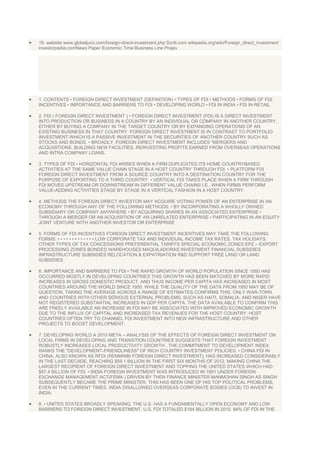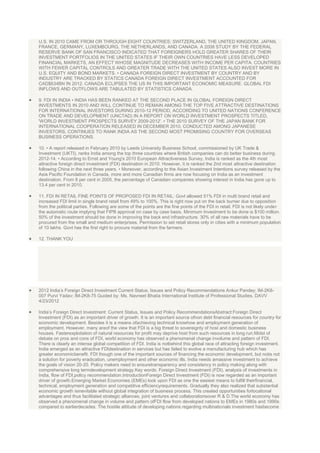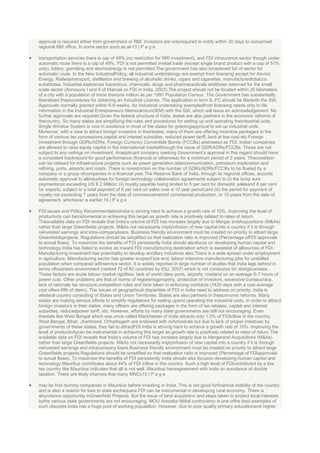India has emerged as an attractive destination for foreign direct investment, especially in the services sector. However, it
has failed to become a major manufacturing hub, which could provide greater economic benefits. While FDI is an
important source of financing economic development, it is not a solution for issues like poverty, unemployment, and other
economic problems. To achieve its goals and attract more FDI, India needs a consistent long-term development strategy
and transparency in policymaking.






